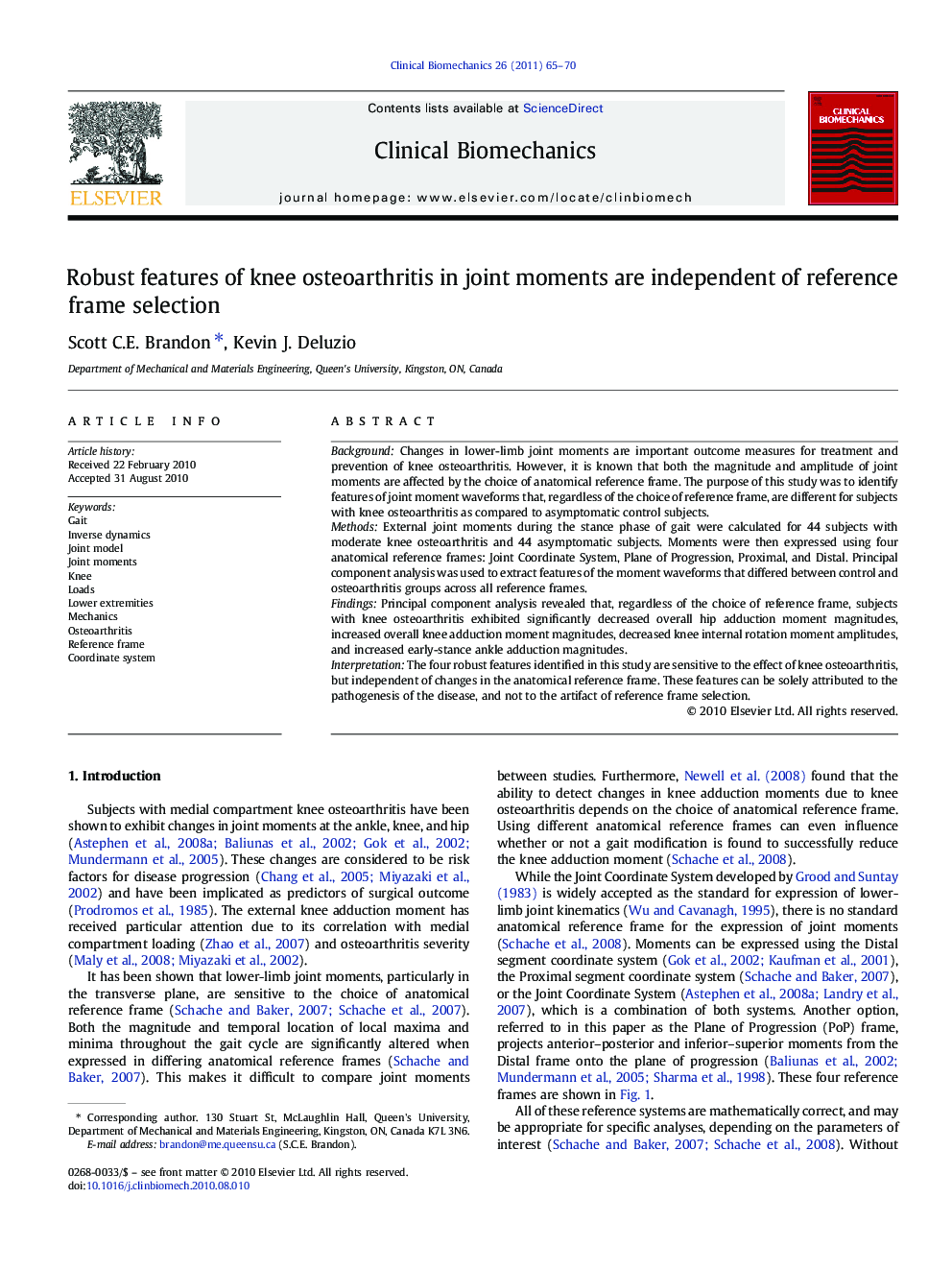| Article ID | Journal | Published Year | Pages | File Type |
|---|---|---|---|---|
| 4051007 | Clinical Biomechanics | 2011 | 6 Pages |
BackgroundChanges in lower-limb joint moments are important outcome measures for treatment and prevention of knee osteoarthritis. However, it is known that both the magnitude and amplitude of joint moments are affected by the choice of anatomical reference frame. The purpose of this study was to identify features of joint moment waveforms that, regardless of the choice of reference frame, are different for subjects with knee osteoarthritis as compared to asymptomatic control subjects.MethodsExternal joint moments during the stance phase of gait were calculated for 44 subjects with moderate knee osteoarthritis and 44 asymptomatic subjects. Moments were then expressed using four anatomical reference frames: Joint Coordinate System, Plane of Progression, Proximal, and Distal. Principal component analysis was used to extract features of the moment waveforms that differed between control and osteoarthritis groups across all reference frames.FindingsPrincipal component analysis revealed that, regardless of the choice of reference frame, subjects with knee osteoarthritis exhibited significantly decreased overall hip adduction moment magnitudes, increased overall knee adduction moment magnitudes, decreased knee internal rotation moment amplitudes, and increased early-stance ankle adduction magnitudes.InterpretationThe four robust features identified in this study are sensitive to the effect of knee osteoarthritis, but independent of changes in the anatomical reference frame. These features can be solely attributed to the pathogenesis of the disease, and not to the artifact of reference frame selection.
